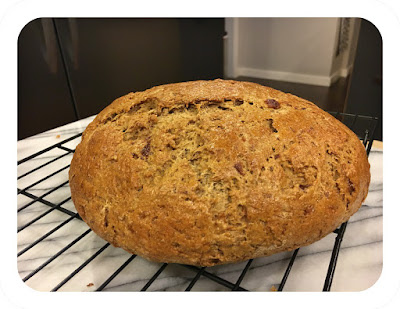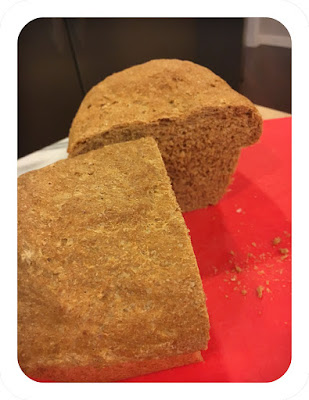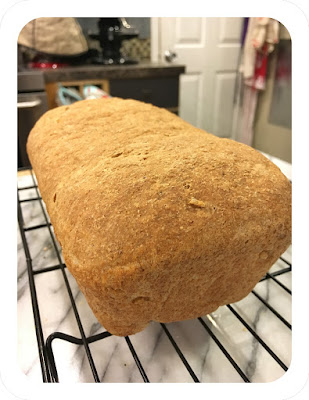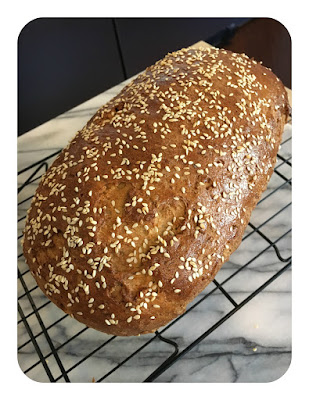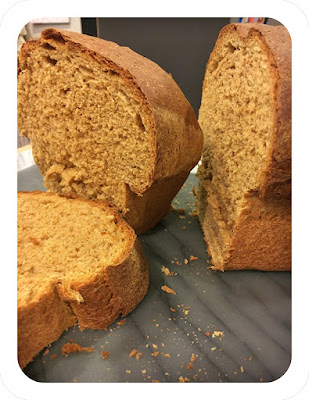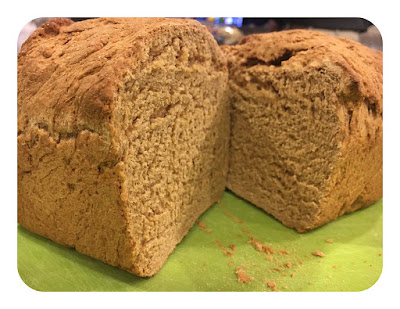Everyone's favorite dairy product is back! This bread has a whopper of a name that comes from the three different flours it uses. It uses a cup of whole-wheat (that I luckily had leftover), rye, and all purpose flour. The recipe only makes one regular sized loaf however, and I didn't look at that when I decided to halve the recipe. So what I got was just a little baby loaf. I'm totally okay with this however, because it's texture and taste makes it perfect for small slices accompanied with other toppings. It's got a little sour taste from the buttermilk, and you also get hints of caraway all throughout the bread. This makes for an interesting combination that goes well with some cheese.
Minus the halving the regular recipe thing, I was really happy how this one turned out. It's a very easy recipe to make, and it even says that you can whip this up in an emergency if you need some bread. I totally agree with that, but I think there might be some easier recipes to make in that time just in case you don't have buttermilk and three different types of flours on hand. We have about a weeks worth of rye breads before we get back into barley breads!












